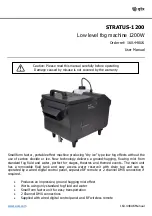Summary of Contents for BM 345
Page 1: ...PRODUCED BY INDUSTRIAL SEWING MASCHINES BM 345 Mechanic s Instrutions ...
Page 2: ...2 ...
Page 4: ...4 ...
Page 15: ...15 Figure 5 Figure 6 ...
Page 24: ...24 Figure 12 ...
Page 1: ...PRODUCED BY INDUSTRIAL SEWING MASCHINES BM 345 Mechanic s Instrutions ...
Page 2: ...2 ...
Page 4: ...4 ...
Page 15: ...15 Figure 5 Figure 6 ...
Page 24: ...24 Figure 12 ...

















